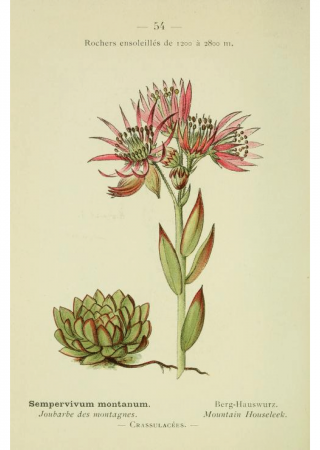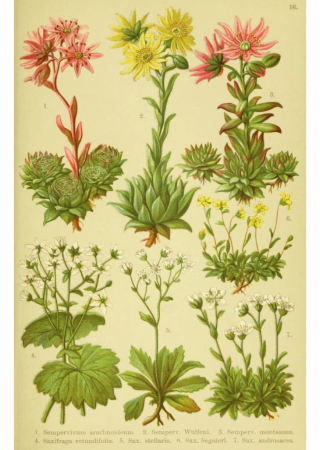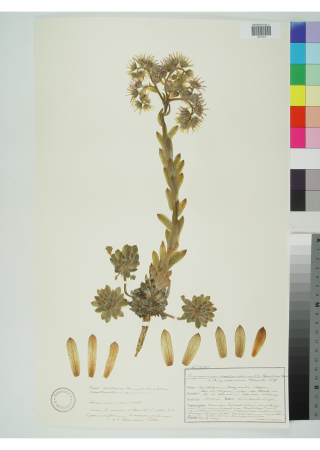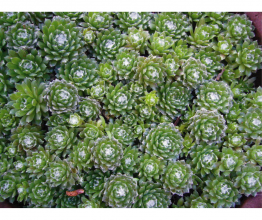Houseleek
Sempervivum
Did you know that… ?
- …since antiquity, houseleeks were planted on roofs, because it was believed that they guarded homes against lightning and fires?
- …houseleeks are well-loved alpine plants, ranking among the hardiest European succulents?
- …houseleeks of the genus Sempervivum are not native to central European mountains; but are escaped from rockeries and gardens?
- …it takes several years for a houseleek to bloom; after blooming, the entire mother plant dies?
- …houseleeks have beneficial effects on human skin, much like aloe vera?
General info
Phylum: Magnoliophyta
Class: Magnoliopsida
Order: Saxifragales
Size: sterile 3-6 cm, flowering 20-50 cm
Habitat: rockeries, rooftops
Distribution: northern Africa, through Europe, to Caucasian mountains and Iran
Relationship with humans: decorative, useful
Biology
Houseleeks occur in about fifty species, from northern Africa, through Europe, to the Caucasian mountains. They occupy hilly to mountainous terrain in these areas. They are succulents - plants adapted to growth in places with little water. They prefer rocky outcrops and rock steppes. They are very undemanding, both for nourishment and for water. Houseleek juice is rich in nutrients, has disinfectant properties and is an anti-inflammatory. Similarly to aloe vera, houseleeks are very effective in treating burns, scaldings, frostbite and sunburn. They reduce pain from insect bites, alleviate itching, redness and swelling.




